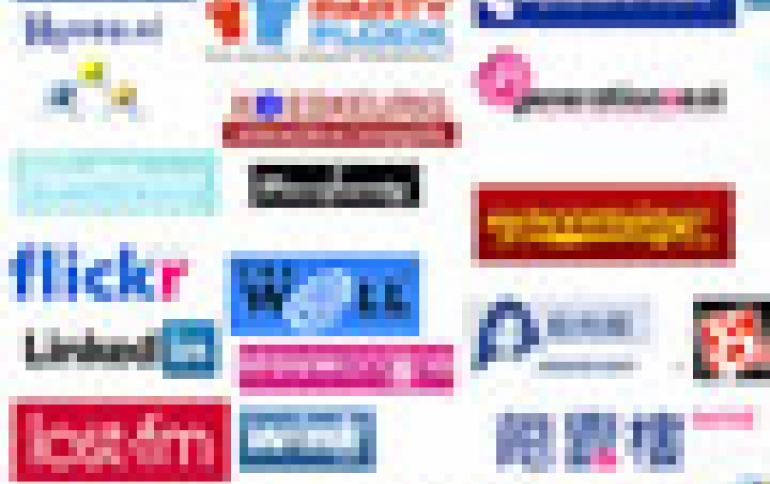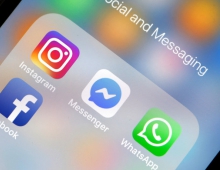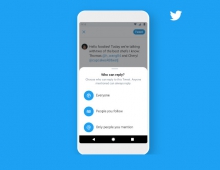
Social Networks Pose Security Risks
One of the nuggets of interesting data inside the newly-published Sophos Security Threat Report 2010 reveals which social network people believe poses the biggest security risk.
Sophos polled over 500 firms, and 60% felt that Facebook was the biggest danger. Of course, Facebook is by far the largest social network - and you'll find more bad apples in the biggest orchard.
Although productivity continues to be the dominant reason for companies to block social networks (a third of companies say this is the reason they block Facebook e.g.), there has been a dramatic rise since April 2009 in the number of businesses who believe malware is their primary security concern with such sites.
It seems these malware concerns are well-justified, with a 70% rise in the proportion of firms that report encountering spam and malware attacks via social networks during 2009. More than half of all companies surveyed said they had received spam via social networking sites, and over a third said they had received malware.
Furthermore, over 72% of firms believe that employees? behavior on social networking sites could endanger their business?s security. This has increased from 66% in the previous study. The number of businesses that were targets for spam, phishing and malware via social networking sites increased dramatically, with spam showing the sharpest rise from 33.4% in April to 57% in December. This highlights a surge in exploitation of such sites by spammers.
The truth is that the security team at Facebook works hard to counter threats on their site - it's just that policing 350 million users can't be an easy job for anyone. But there is no doubt that simple changes could make Facebook users safer. For instance, when Facebook rolled-out its new recommended privacy settings late last year, it was a backwards step, encouraging many users to share their information with everybody on the internet.
Those worried about the dangers of social networking sites have a right to be concerned, as many malicious attacks, spammers and data harvesters take advantage of undercautious users, Sophos said. Most notably, the notorious Koobface worm family became more diverse and sophisticated in 2009. The sophistication of Koobface is such that it is capable of registering a Facebook account, activating the account by confirming an email sent to a Gmail address, befriending random strangers on the site, joining random Facebook groups, and posting messages on the walls of Facebook friends (often claiming to link to sexy videos laced with malware).
Furthermore, it includes code to avoid drawing attention to itself by restricting how many new Facebook friends it makes each day.
In April 2009, the StalkDaily worm rampaged Twitter as heavily spammed messages pushing an infected site by more subtle attacks spread from tweeter to tweeter. The worm appeared to be the work of 17-year-old Mikeyy Mooney, whose name was referenced in a second wave of attacks appearing just hours after the initial StalkDaily incident.
Shortly afterward, yet another worm that was crafted using cross-site scripting techniques to spread referenced Mikeyy. Further attacks in April brought more misery to Twitter users.
Although LinkedIn is considered to be by far the least threatening of the networks, it's worth remembering that it can still provide a sizeable pool of information for hackers. Targeted attacks against companies are in the news at the moment, and the more information a criminal can get about your organization's structure, the easier for them to send a poisoned attachment to precisely the person whose computer they want to break into.
Sites like LinkedIn provide hackers with what is effectively a corporate directory, listing your staff's names and positions. This makes it child's play to reverse-engineer the email addresses of potential victims.
Although productivity continues to be the dominant reason for companies to block social networks (a third of companies say this is the reason they block Facebook e.g.), there has been a dramatic rise since April 2009 in the number of businesses who believe malware is their primary security concern with such sites.
It seems these malware concerns are well-justified, with a 70% rise in the proportion of firms that report encountering spam and malware attacks via social networks during 2009. More than half of all companies surveyed said they had received spam via social networking sites, and over a third said they had received malware.
Furthermore, over 72% of firms believe that employees? behavior on social networking sites could endanger their business?s security. This has increased from 66% in the previous study. The number of businesses that were targets for spam, phishing and malware via social networking sites increased dramatically, with spam showing the sharpest rise from 33.4% in April to 57% in December. This highlights a surge in exploitation of such sites by spammers.
The truth is that the security team at Facebook works hard to counter threats on their site - it's just that policing 350 million users can't be an easy job for anyone. But there is no doubt that simple changes could make Facebook users safer. For instance, when Facebook rolled-out its new recommended privacy settings late last year, it was a backwards step, encouraging many users to share their information with everybody on the internet.
Those worried about the dangers of social networking sites have a right to be concerned, as many malicious attacks, spammers and data harvesters take advantage of undercautious users, Sophos said. Most notably, the notorious Koobface worm family became more diverse and sophisticated in 2009. The sophistication of Koobface is such that it is capable of registering a Facebook account, activating the account by confirming an email sent to a Gmail address, befriending random strangers on the site, joining random Facebook groups, and posting messages on the walls of Facebook friends (often claiming to link to sexy videos laced with malware).
Furthermore, it includes code to avoid drawing attention to itself by restricting how many new Facebook friends it makes each day.
In April 2009, the StalkDaily worm rampaged Twitter as heavily spammed messages pushing an infected site by more subtle attacks spread from tweeter to tweeter. The worm appeared to be the work of 17-year-old Mikeyy Mooney, whose name was referenced in a second wave of attacks appearing just hours after the initial StalkDaily incident.
Shortly afterward, yet another worm that was crafted using cross-site scripting techniques to spread referenced Mikeyy. Further attacks in April brought more misery to Twitter users.
Although LinkedIn is considered to be by far the least threatening of the networks, it's worth remembering that it can still provide a sizeable pool of information for hackers. Targeted attacks against companies are in the news at the moment, and the more information a criminal can get about your organization's structure, the easier for them to send a poisoned attachment to precisely the person whose computer they want to break into.
Sites like LinkedIn provide hackers with what is effectively a corporate directory, listing your staff's names and positions. This makes it child's play to reverse-engineer the email addresses of potential victims.





















